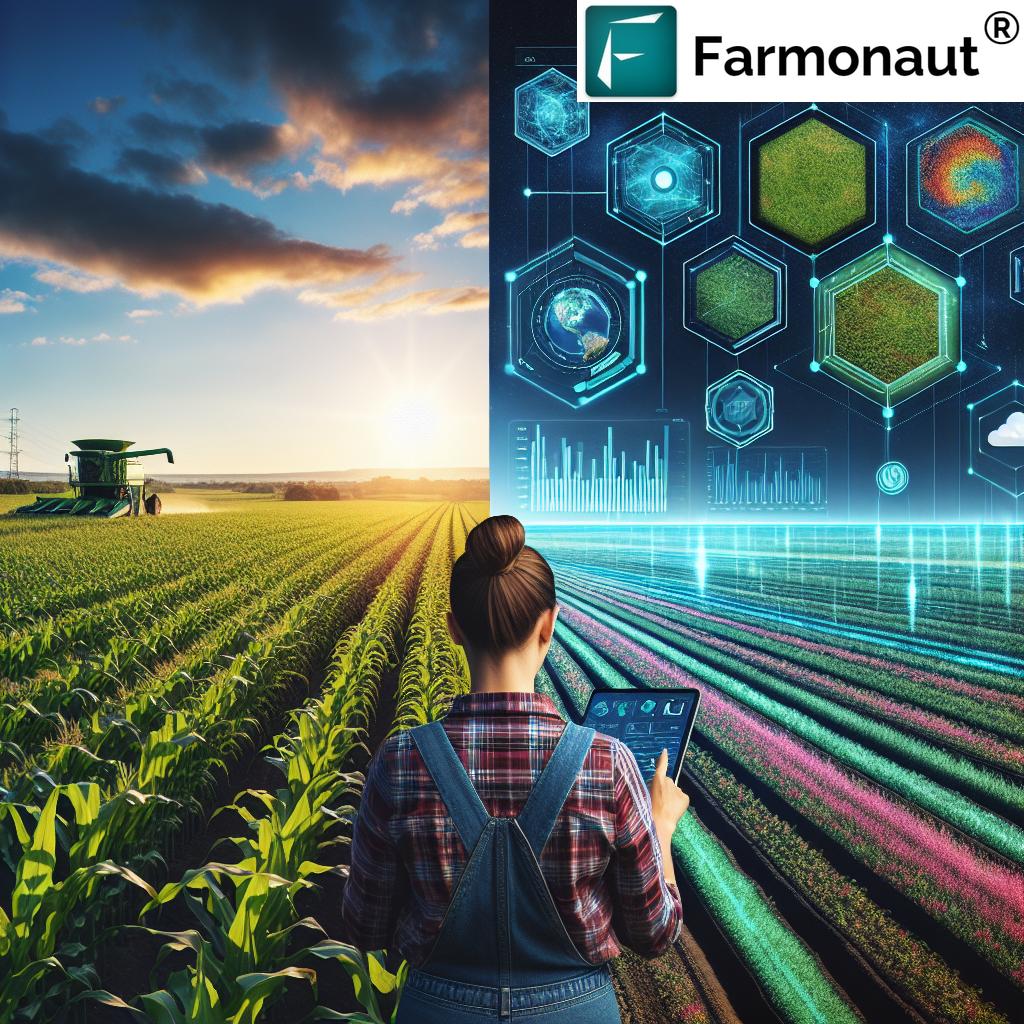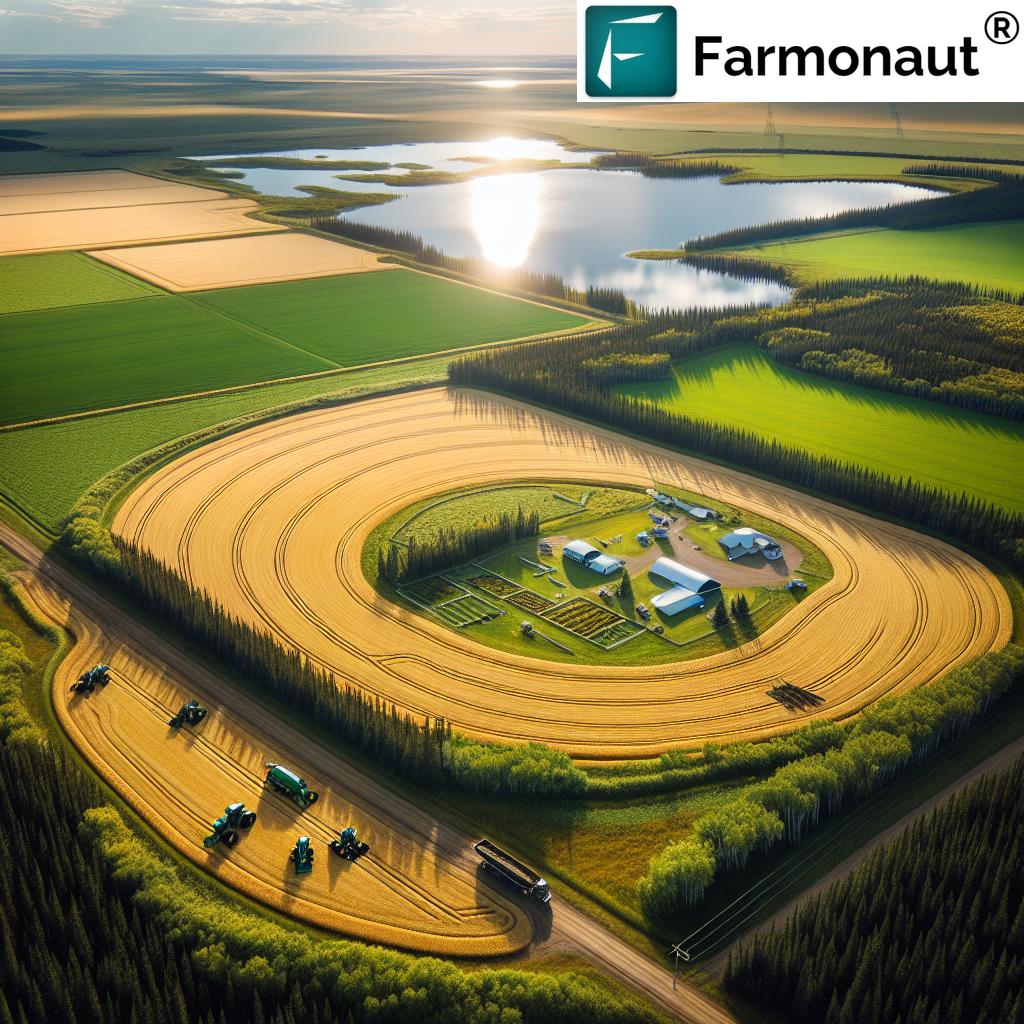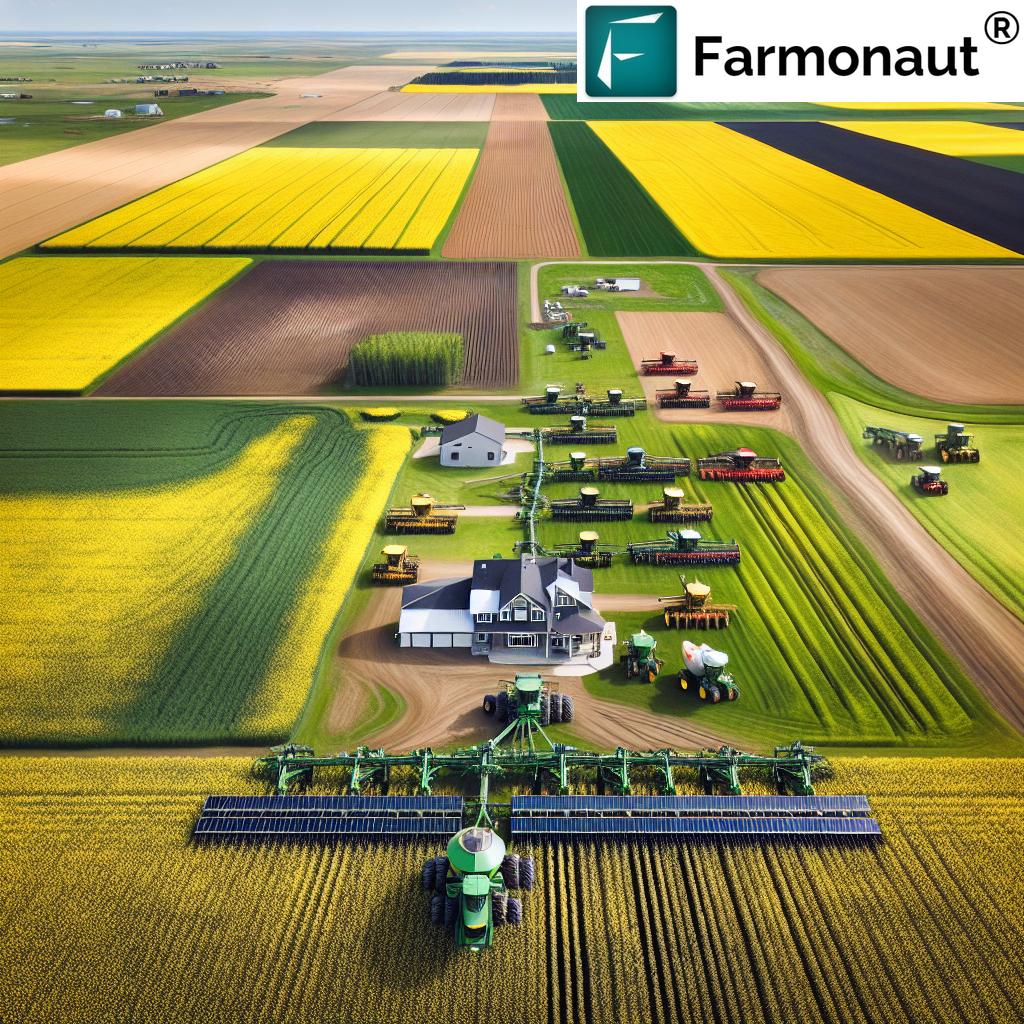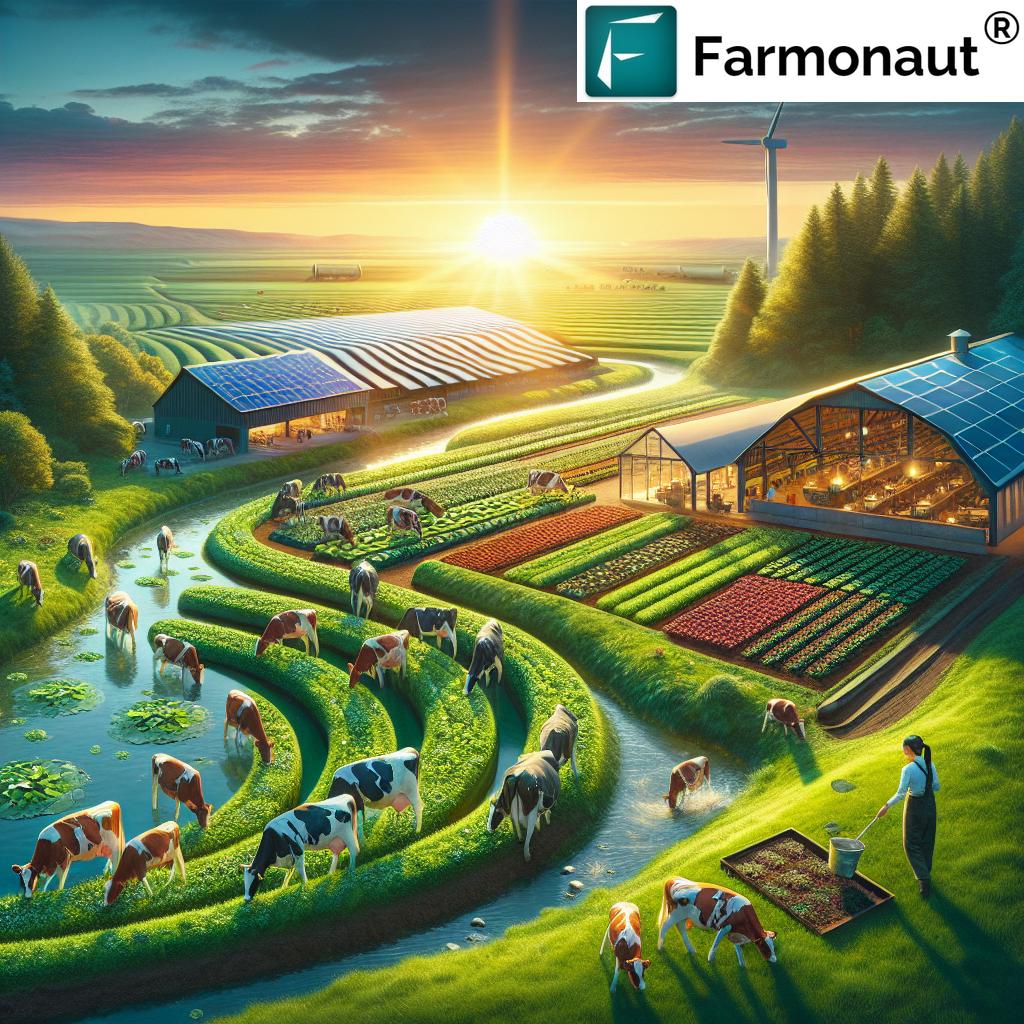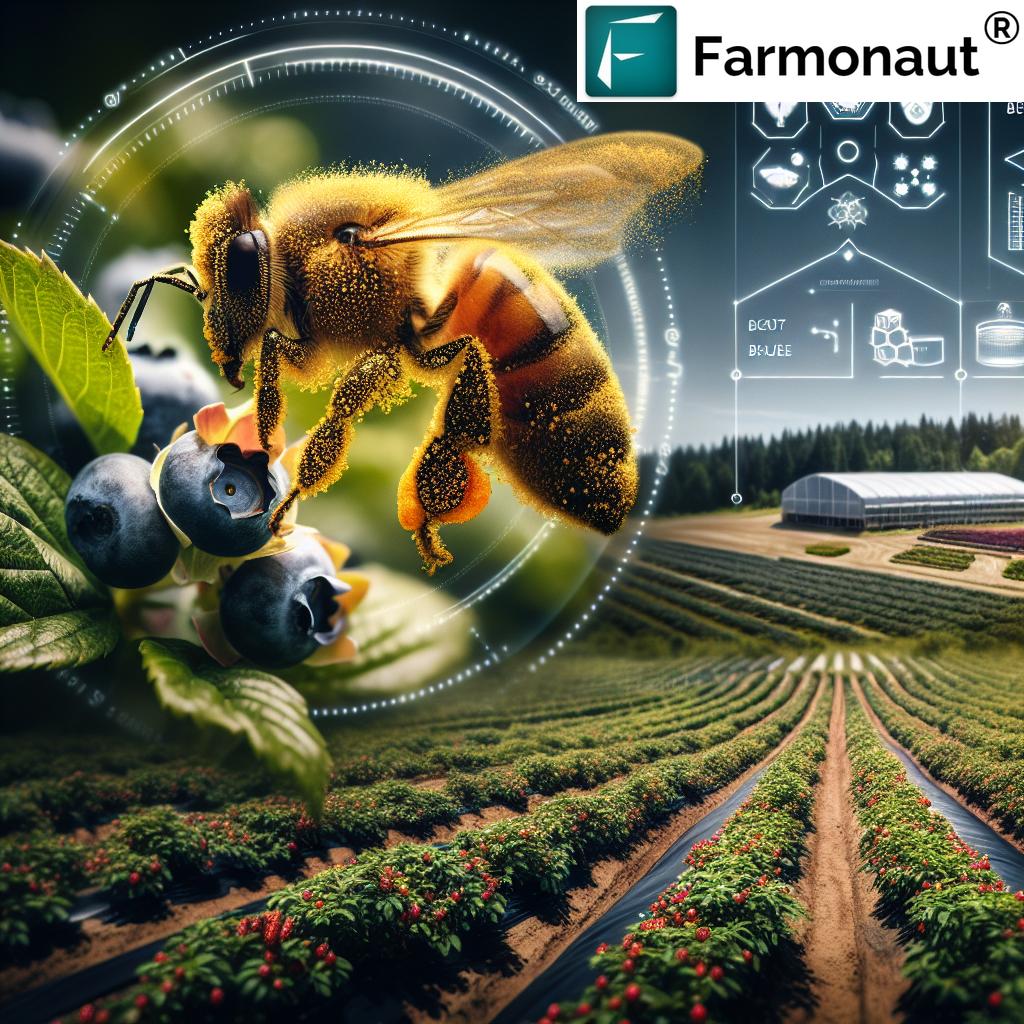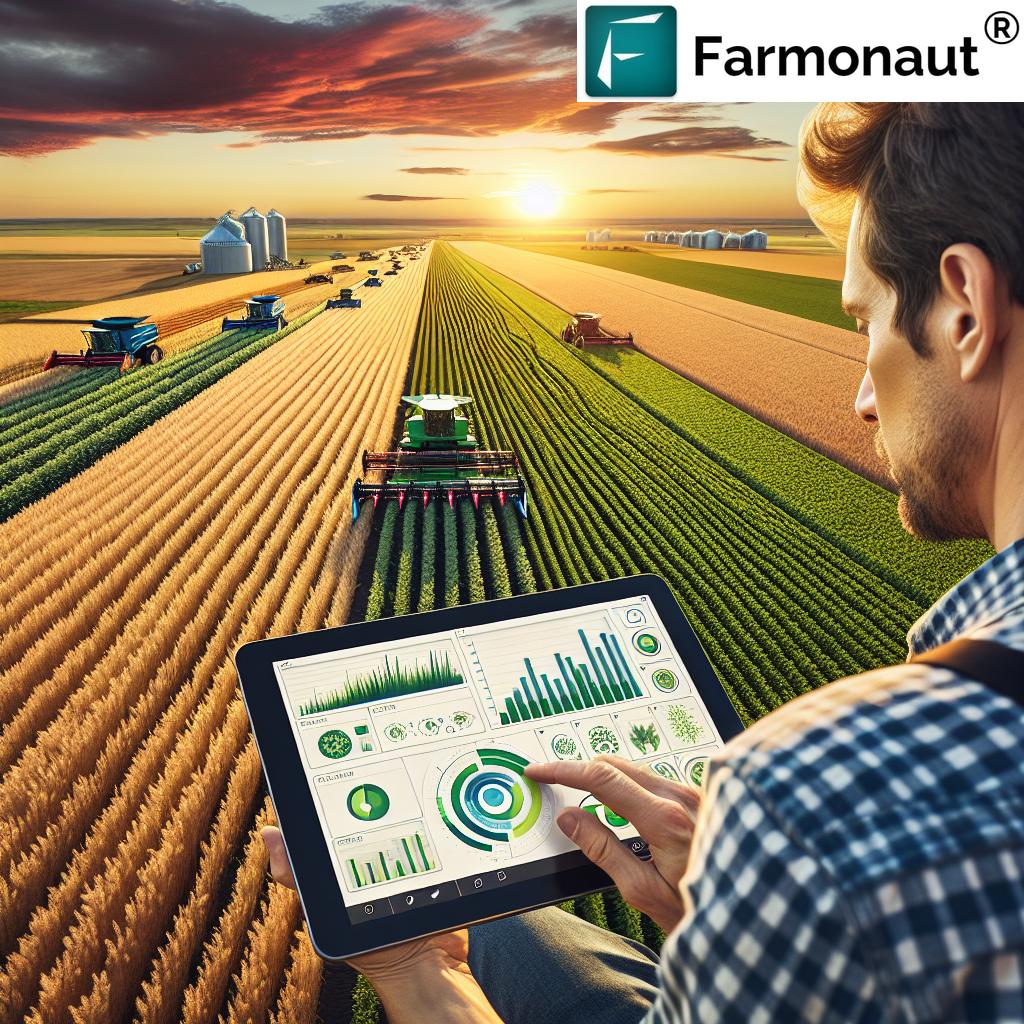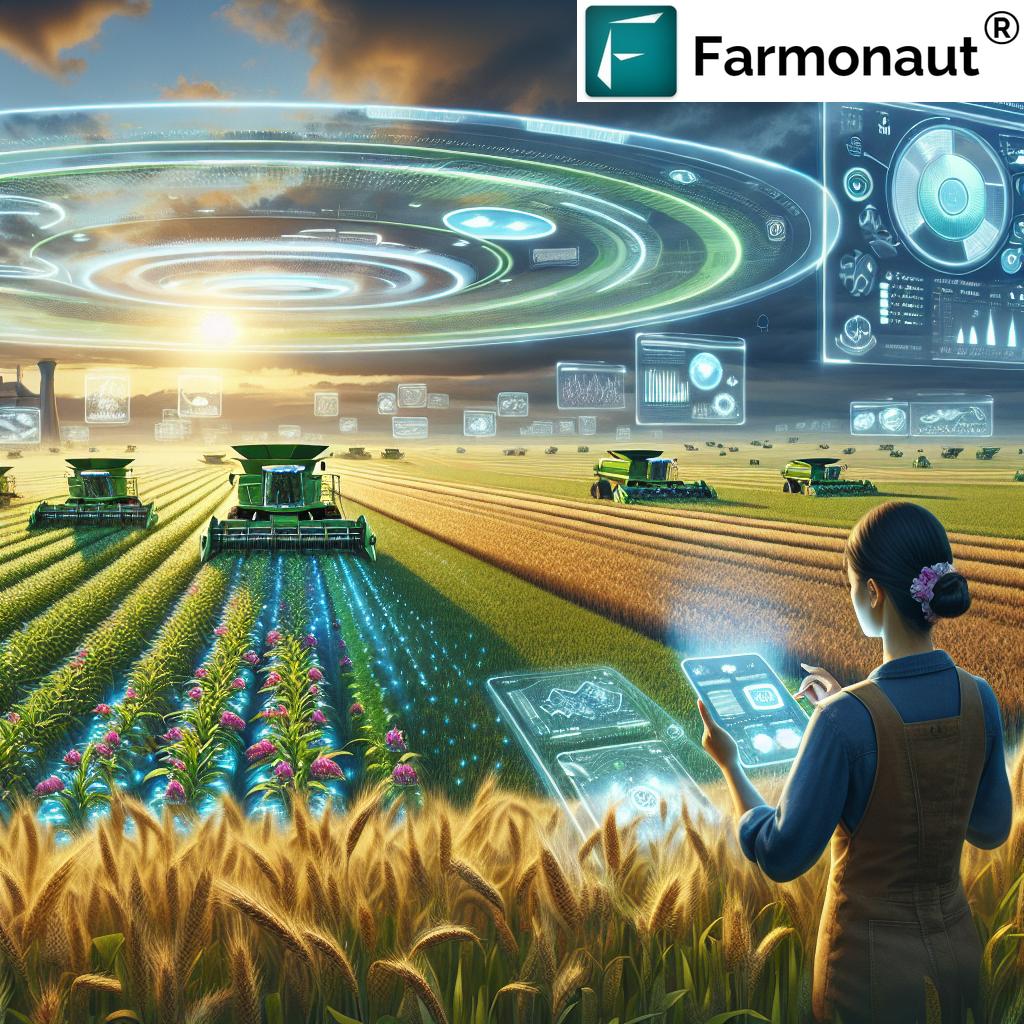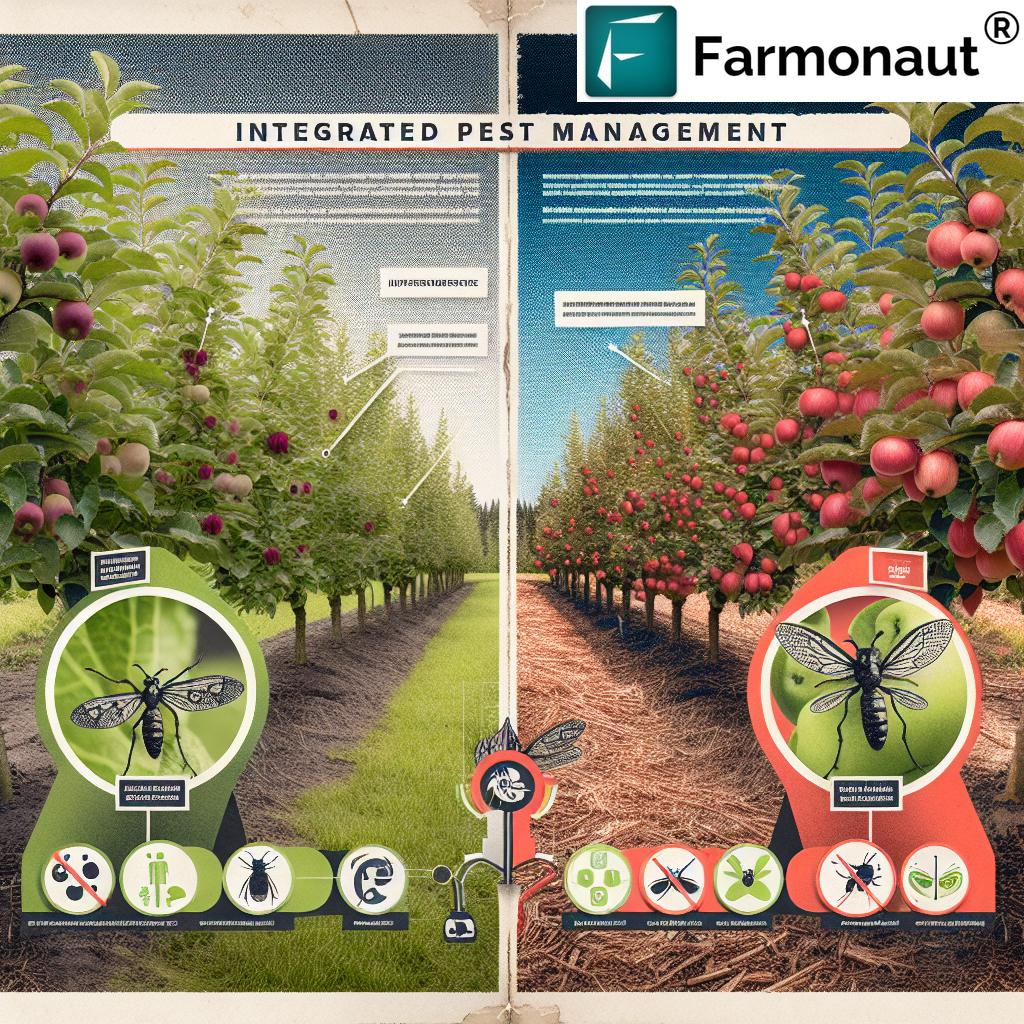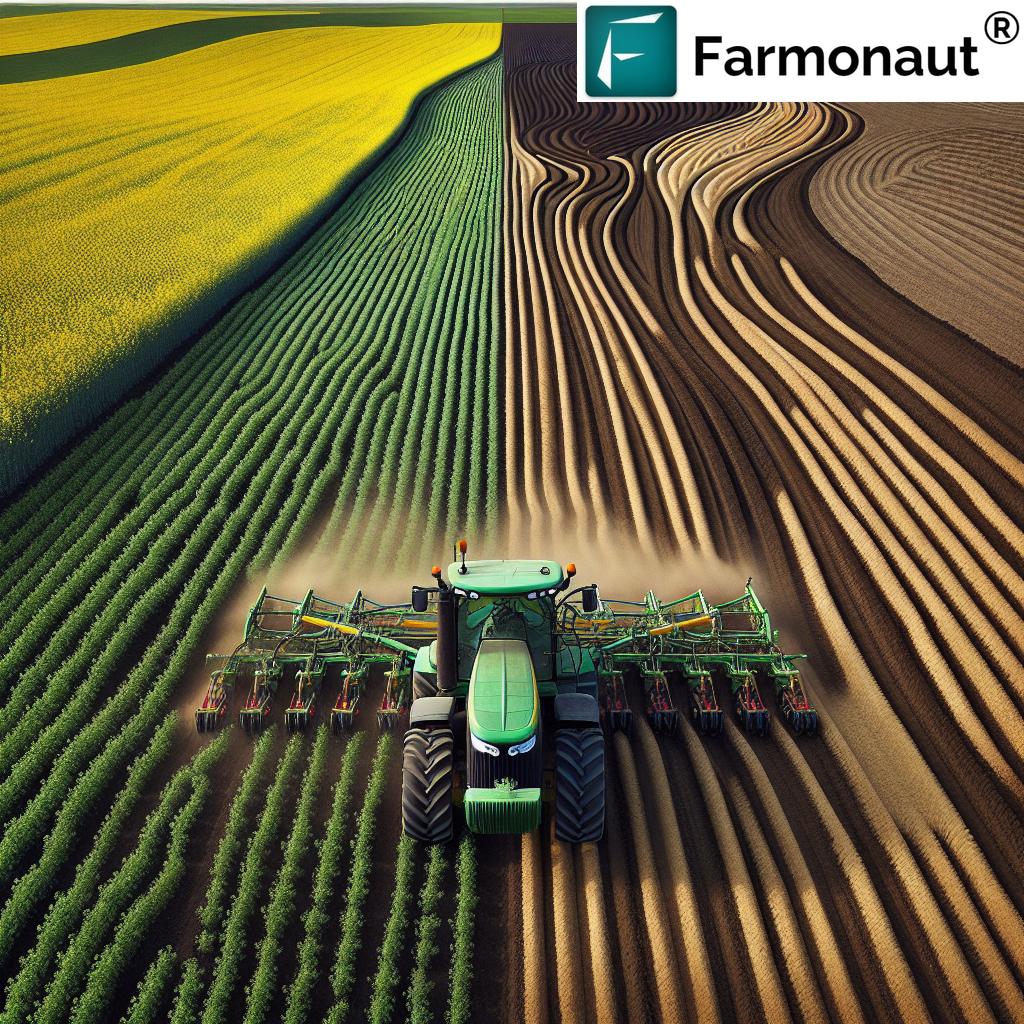Revolutionizing Canadian Farming: Digital Agriculture Technologies Boost Crop Productivity in Ontario for 2024

“Digital agriculture technologies have increased crop yields by up to 20% in Ontario’s farms for the 2024 growing season.”
As we step into 2024, the agricultural landscape in Canada, particularly in Ontario, is undergoing a remarkable transformation. Digital agriculture technologies and precision farming techniques are at the forefront of this revolution, promising to boost crop productivity and reshape the future of farming. In this comprehensive blog post, we’ll explore the cutting-edge innovations that are changing the game for Canadian farmers, with a special focus on the thriving agricultural sector in Ontario.
The Digital Agriculture Revolution in Canada
The Canadian agricultural industry has always been a cornerstone of the nation’s economy. Now, with the integration of digital technologies, we’re witnessing a new era of farming that’s more efficient, sustainable, and productive than ever before. From smart irrigation systems to AI-powered decision support tools, the digital revolution is touching every aspect of farm operations.
In Ontario, the heart of Canada’s agricultural belt, farmers are embracing these technologies with open arms. The province’s diverse crop portfolio, ranging from corn and soybeans to fruits and vegetables, provides an ideal testing ground for innovative farming solutions. As we delve deeper into the world of digital agriculture, we’ll see how these technologies are not just improving yields but also contributing to more sustainable farming practices.
Precision Farming Techniques Transforming Ontario’s Agriculture
Precision farming is at the core of the agricultural revolution in Ontario. By leveraging data-driven insights and advanced technologies, farmers can make more informed decisions about every aspect of their operations. Let’s explore some of the key precision farming techniques that are making waves in 2024:
- GPS-guided machinery: Tractors and other farm equipment equipped with GPS technology can operate with centimeter-level accuracy, reducing overlap and improving efficiency in planting, spraying, and harvesting.
- Variable rate technology (VRT): This allows farmers to apply different rates of inputs such as fertilizers and pesticides based on the specific needs of each part of their field, optimizing resource use and minimizing environmental impact.
- Soil sampling and mapping: High-resolution soil maps help farmers understand the variability in their fields, enabling them to tailor their management practices accordingly.
- Yield monitoring: Advanced sensors on harvesting equipment provide real-time data on crop yields, allowing farmers to identify high and low-performing areas of their fields.
These precision farming techniques are not only improving crop yields but also contributing to more sustainable farming practices by reducing waste and optimizing resource use.
Smart Irrigation Systems: Revolutionizing Water Management
Water management is a critical aspect of farming, and smart irrigation systems are changing the game in Ontario. These systems use a combination of sensors, weather data, and AI algorithms to deliver water precisely when and where it’s needed. The benefits of smart irrigation include:
- Reduced water waste
- Improved crop health and yield
- Lower energy costs for pumping
- Decreased risk of over-watering and related issues like soil erosion and nutrient leaching
“AI-powered decision support systems have reduced water usage by 30% in Canadian smart irrigation systems.”
One of the most promising aspects of smart irrigation is its integration with other digital agriculture technologies. For instance, satellite imagery and drone data can be used to create detailed maps of crop water stress, which then inform the irrigation system’s decisions. This level of precision ensures that every drop of water is used efficiently, a crucial factor in sustainable farming.
Agricultural Data Analytics: The Power of Information
In the digital age, data is king, and agriculture is no exception. Agricultural data analytics is transforming how farmers make decisions, from planting to harvesting and everything in between. Here’s how data analytics is being used in Ontario’s farms:
- Predictive analytics: By analyzing historical data and current conditions, farmers can predict crop yields, pest outbreaks, and optimal harvest times.
- Risk management: Data analytics helps farmers assess and mitigate risks related to weather, market fluctuations, and other factors.
- Resource optimization: By analyzing data on inputs like water, fertilizer, and labor, farmers can optimize their resource allocation for maximum efficiency.
- Supply chain management: Data analytics improves traceability and efficiency in the agricultural supply chain, from farm to table.
The power of agricultural data analytics lies in its ability to turn vast amounts of information into actionable insights. Farmers can now make decisions based on solid data rather than gut feeling or tradition, leading to more consistent and profitable outcomes.
Crop Management Software: The Digital Farm Manager
Crop management software is becoming an indispensable tool for Ontario’s farmers. These comprehensive platforms integrate various aspects of farm management into a single, user-friendly interface. Key features of modern crop management software include:
- Field mapping and planning
- Crop rotation and variety selection tools
- Pest and disease monitoring
- Nutrient management planning
- Weather forecasting and alerts
- Record-keeping and compliance management
By centralizing all this information, crop management software allows farmers to have a holistic view of their operations. This leads to better decision-making, improved efficiency, and ultimately, higher yields and profitability.
Farm Productivity Tools: Streamlining Operations
In addition to crop management software, a wide array of farm productivity tools are helping Ontario’s farmers streamline their operations. These tools range from simple apps to complex integrated systems. Some popular farm productivity tools include:
- Equipment tracking systems: These help farmers monitor the location and performance of their machinery, optimizing usage and maintenance schedules.
- Labor management apps: These tools help farmers track work hours, assign tasks, and manage payroll more efficiently.
- Inventory management systems: Farmers can keep track of inputs, harvested crops, and other inventory items in real-time.
- Financial management tools: These help farmers track expenses, revenue, and profitability, making financial planning easier.
By adopting these productivity tools, Ontario’s farmers are able to save time on administrative tasks and focus more on what they do best: growing high-quality crops.
Sustainable Farming Practices in the Digital Age
Sustainability is a key concern for modern farmers, and digital agriculture technologies are playing a crucial role in promoting more sustainable farming practices. Here’s how digital tools are contributing to sustainability in Ontario’s farms:
- Precision application of inputs: By applying fertilizers and pesticides only where and when they’re needed, farmers can reduce chemical runoff and minimize environmental impact.
- Soil health monitoring: Digital tools help farmers track soil health indicators, enabling them to implement practices that improve soil quality over time.
- Water conservation: Smart irrigation systems and soil moisture sensors help farmers use water more efficiently, reducing waste and preserving this precious resource.
- Carbon footprint reduction: By optimizing operations and reducing inputs, digital agriculture technologies help farmers lower their carbon footprint.
These sustainable practices not only benefit the environment but also often lead to cost savings and improved long-term productivity for farmers.
Farm Equipment Innovations: The Next Generation of Machinery
Farm equipment is evolving rapidly, with new innovations hitting the market every year. In Ontario, farmers are investing in cutting-edge machinery that integrates seamlessly with their digital agriculture systems. Some notable innovations include:
- Autonomous tractors: These self-driving machines can operate 24/7, improving efficiency and reducing labor costs.
- Robotic harvesters: Particularly useful for fruits and vegetables, these robots can harvest crops gently and efficiently.
- Drones for crop monitoring: Equipped with multispectral cameras, drones provide high-resolution imagery for crop health assessment.
- Smart sprayers: These advanced sprayers can detect and target individual weeds, significantly reducing herbicide use.
These equipment innovations are not just about replacing human labor; they’re about enhancing the precision and efficiency of farming operations. By integrating with other digital agriculture technologies, this new generation of farm equipment is helping Ontario’s farmers achieve unprecedented levels of productivity.
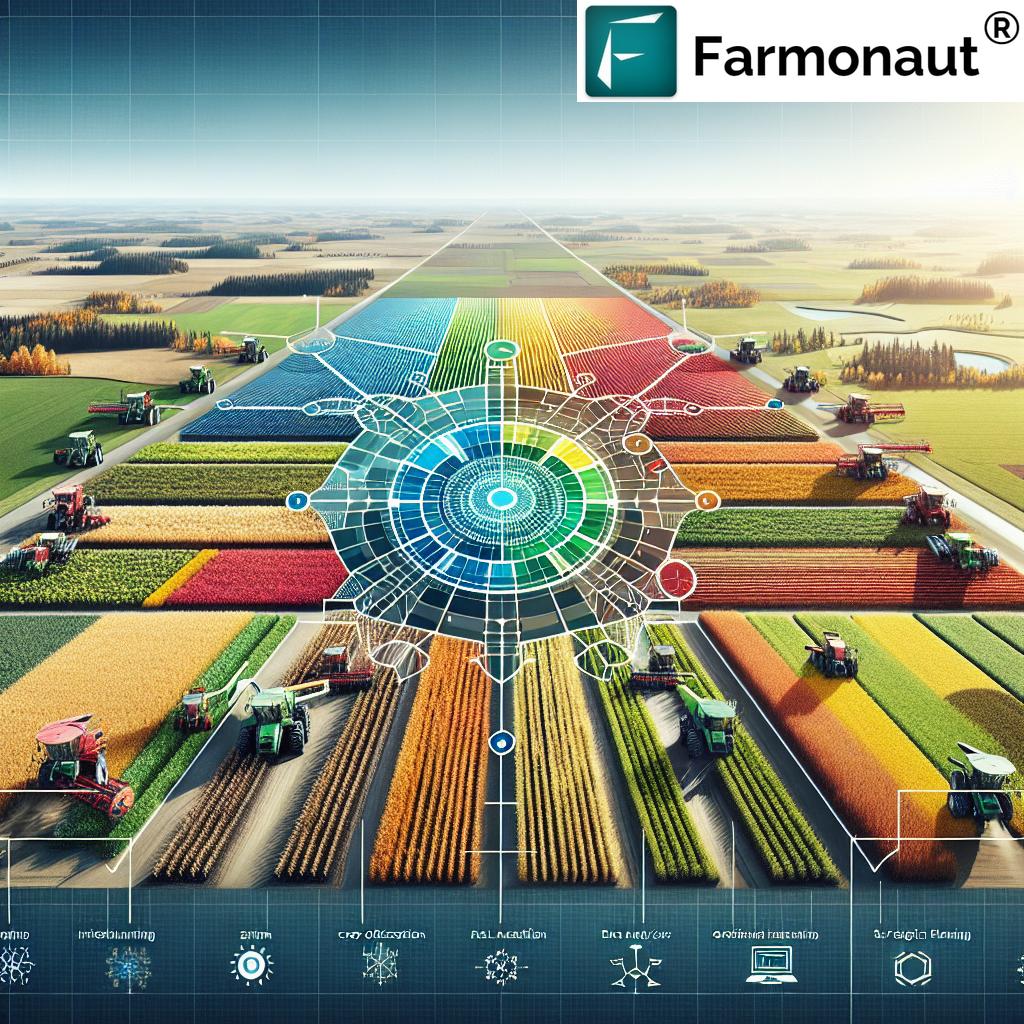
Agtech Market Trends: What’s Hot in 2024
The agtech market is booming, with new players and technologies emerging constantly. In 2024, we’re seeing several exciting trends in the Canadian agtech landscape:
- AI and machine learning: These technologies are becoming more sophisticated, offering increasingly accurate predictions and recommendations for farmers.
- Blockchain for traceability: Blockchain technology is being used to improve transparency and traceability in the agricultural supply chain.
- Vertical farming: While not strictly a field technology, vertical farming is gaining traction in urban areas, complementing traditional agriculture.
- Precision livestock farming: Digital technologies are not just for crops; they’re also revolutionizing livestock management.
- Ag-specific IoT devices: The Internet of Things (IoT) is expanding in agriculture, with new sensors and devices designed specifically for farm use.
These trends are shaping the future of farming in Ontario and beyond, offering new opportunities for innovation and growth in the agricultural sector.
Precision Agriculture Solutions: A Closer Look
Precision agriculture is all about doing the right thing, in the right place, at the right time. In Ontario, farmers are adopting a range of precision agriculture solutions to optimize their operations. Let’s take a closer look at some of these solutions:
- Satellite imagery analysis: High-resolution satellite images provide valuable insights into crop health, soil moisture, and more.
- Soil sensors: These devices measure various soil parameters, helping farmers make informed decisions about irrigation and fertilization.
- Weather stations: On-farm weather stations provide hyperlocal weather data, crucial for decision-making.
- Crop modeling software: These tools use data to predict crop growth and development, helping farmers plan their activities.
- Precision planting equipment: Advanced planters can adjust seed depth and spacing on the go, optimizing plant populations.
By adopting these precision agriculture solutions, Ontario’s farmers are able to manage their crops with unprecedented accuracy, leading to improved yields and resource efficiency.
The Role of Artificial Intelligence in Agriculture
Artificial Intelligence (AI) is playing an increasingly important role in agriculture, offering capabilities that were once the stuff of science fiction. In Ontario’s farms, AI is being used in various ways:
- Crop disease detection: AI algorithms can analyze images of crops to detect signs of disease early, allowing for timely intervention.
- Yield prediction: By analyzing multiple data points, AI can provide accurate yield predictions, helping farmers plan their harvests and market strategies.
- Autonomous equipment control: AI is the brain behind self-driving tractors and other autonomous farm equipment.
- Personalized crop recommendations: AI-powered systems can provide tailored recommendations for crop varieties, planting times, and management practices based on a farm’s specific conditions.
The potential of AI in agriculture is vast, and we’re only scratching the surface. As these technologies continue to evolve, they promise to bring even more revolutionary changes to farming in Ontario and beyond.
Challenges and Opportunities in Digital Agriculture
While the benefits of digital agriculture are clear, the transition is not without its challenges. Some of the key issues facing Ontario’s farmers as they adopt these technologies include:
- Initial investment costs: Many digital agriculture technologies require significant upfront investment.
- Learning curve: Farmers need to acquire new skills to effectively use these technologies.
- Data privacy and security: As more farm data is collected and stored digitally, ensuring its security becomes crucial.
- Connectivity issues: Many digital agriculture technologies rely on reliable internet connections, which can be a challenge in rural areas.
However, these challenges also present opportunities. For example, the need for digital skills in agriculture is creating new job opportunities in rural areas. Additionally, the focus on data security is driving innovations in agricultural cybersecurity.
The Future of Digital Agriculture in Ontario
As we look to the future, it’s clear that digital agriculture will continue to play a crucial role in Ontario’s farming sector. Some trends we expect to see in the coming years include:
- Increased integration of technologies: Different digital agriculture technologies will become more interconnected, creating comprehensive farm management systems.
- Greater emphasis on sustainability: Digital tools will play a key role in helping farmers meet increasingly stringent environmental regulations.
- Expansion of precision agriculture: As technologies become more affordable, precision agriculture practices will become standard even on smaller farms.
- Growth of ag-specific AI: We’ll see more AI tools developed specifically for agricultural applications.
These developments promise to make Ontario’s agricultural sector more productive, sustainable, and resilient in the face of challenges like climate change and market fluctuations.
Farmonaut: Pioneering Digital Agriculture Solutions
In the rapidly evolving landscape of digital agriculture, Farmonaut stands out as a pioneering company offering advanced, satellite-based farm management solutions. Through its android, iOS, and web applications, as well as its API, Farmonaut is making precision agriculture more accessible and affordable for farmers worldwide.
Farmonaut’s platform integrates several key technologies that are transforming agriculture:
- Satellite-Based Crop Health Monitoring: Using multispectral satellite imagery, Farmonaut provides farmers with crucial insights into vegetation health, soil moisture levels, and other critical metrics. This data enables farmers to make informed decisions about irrigation, fertilizer usage, and pest management, ultimately optimizing crop yields and reducing resource wastage.
- Jeevn AI Advisory System: This AI-driven tool delivers real-time insights, weather forecasts, and expert crop management strategies to farmers. By analyzing satellite data and other inputs, Jeevn AI generates customized advice that helps improve farm productivity and efficiency.
- Blockchain-Based Product Traceability: Farmonaut’s blockchain integration enables robust traceability solutions, particularly valuable in the agricultural sector. This technology ensures transparency and security at every stage of the product’s journey from farm to consumer, enhancing trust and reducing fraud in supply chains.
- Fleet and Resource Management: Farmonaut offers tools for efficient fleet management, helping agribusinesses optimize their logistics operations. This leads to reduced operational costs through better vehicle usage, improved safety, and more effective management of agricultural machinery.
- Carbon Footprinting: To support sustainable farming practices, Farmonaut provides carbon footprint tracking. This feature offers real-time data on emissions, enabling agribusinesses to take concrete steps towards sustainability and comply with environmental regulations.
Farmonaut’s solutions cater to a wide range of users in the agricultural ecosystem, from individual farmers to large agribusinesses, government agencies, and financial institutions. By providing affordable access to advanced agricultural technologies, Farmonaut is playing a crucial role in democratizing precision agriculture and promoting sustainable farming practices globally.
For more information on Farmonaut’s innovative solutions, visit their web application or explore their API for developers. You can also download their mobile apps for Android and iOS.
Digital Agriculture Technologies Impact in Ontario for 2024
| Technology Name | Primary Function | Estimated Adoption Rate (%) | Projected Yield Increase (%) | Resource Efficiency Improvement (%) | Initial Investment Cost Range ($) | Estimated ROI Timeline (months) |
|---|---|---|---|---|---|---|
| AI-powered Crop Management Software | Decision support and farm planning | 65 | 15 | 20 | 5,000 – 20,000 | 12-18 |
| Smart Irrigation Systems | Water management optimization | 55 | 10 | 30 | 10,000 – 50,000 | 18-24 |
| Precision Farming Equipment | Variable rate application of inputs | 70 | 20 | 25 | 50,000 – 200,000 | 24-36 |
| Agricultural Drones | Crop monitoring and spraying | 40 | 8 | 15 | 2,000 – 15,000 | 6-12 |
| IoT Sensors for Soil Monitoring | Real-time soil condition tracking | 60 | 12 | 18 | 5,000 – 25,000 | 12-24 |
| Satellite Imagery Analysis Tools | Large-scale crop health assessment | 75 | 10 | 22 | 1,000 – 10,000 | 6-12 |
| Automated Farm Equipment | Labor-saving and precision operations | 35 | 25 | 30 | 100,000 – 500,000 | 36-48 |
Conclusion: Embracing the Digital Agriculture Revolution
As we’ve explored throughout this blog post, digital agriculture technologies are revolutionizing farming in Ontario and across Canada. From precision farming techniques and smart irrigation systems to advanced crop management software and farm equipment innovations, these technologies are helping farmers boost productivity, improve sustainability, and navigate the challenges of modern agriculture.
The adoption of these technologies is not just a trend; it’s a necessary evolution in the face of growing global food demand, climate change, and resource constraints. By embracing digital agriculture, Ontario’s farmers are positioning themselves at the forefront of this agricultural revolution, ensuring the continued success and sustainability of Canada’s vital farming sector.
As we look to the future, it’s clear that the integration of digital technologies in agriculture will only deepen. Farmers who adapt and adopt these innovations will be best positioned to thrive in the increasingly complex and challenging world of modern farming. The digital agriculture revolution is here, and it’s transforming Canadian farming for the better.
FAQs
- What is digital agriculture?
Digital agriculture refers to the use of digital technologies, data, and analytics to optimize farming practices, increase productivity, and improve sustainability in agriculture. - How are precision farming techniques benefiting Ontario farmers?
Precision farming techniques allow Ontario farmers to optimize resource use, increase yields, reduce waste, and make more informed decisions based on data-driven insights. - What role does AI play in modern agriculture?
AI in agriculture is used for various applications including crop disease detection, yield prediction, autonomous equipment control, and personalized crop recommendations. - How do smart irrigation systems improve water management?
Smart irrigation systems use sensors, weather data, and AI algorithms to deliver water precisely when and where it’s needed, reducing water waste and improving crop health. - What are some challenges in adopting digital agriculture technologies?
Challenges include initial investment costs, the learning curve for new technologies, data privacy and security concerns, and connectivity issues in rural areas. - How is Farmonaut contributing to the digital agriculture revolution?
Farmonaut offers advanced satellite-based farm management solutions, including crop health monitoring, AI advisory systems, and blockchain-based traceability, making precision agriculture more accessible and affordable. - What are the environmental benefits of digital agriculture?
Digital agriculture promotes more sustainable farming practices by optimizing resource use, reducing chemical inputs, and helping farmers make environmentally friendly decisions. - How can farmers get started with digital agriculture technologies?
Farmers can start by exploring available technologies, attending workshops or webinars, consulting with agricultural technology providers, and gradually implementing solutions that best fit their farm’s needs and budget.
To learn more about Farmonaut’s innovative solutions and how they can benefit your farm, visit their website or explore their mobile apps:
For developers interested in integrating Farmonaut’s technology into their own applications, check out the API and API Developer Docs.
Stay tuned for more updates on the exciting world of digital agriculture and how it’s shaping the future of farming in Ontario and beyond!





